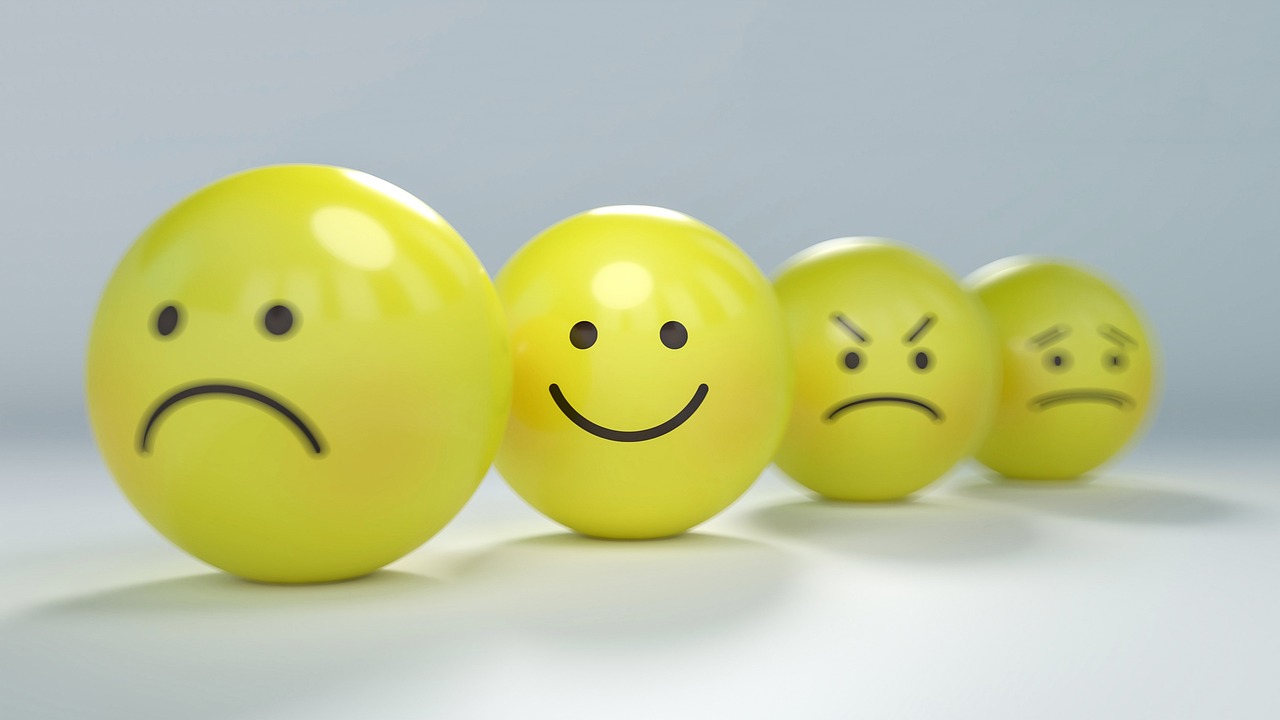Psychology of Emoticons

Introduction to the nature of language
Language is as old as human civilization, it would not be entirely wrong to even say that it is the genesis of language which paved way to civilization as how we know it to be today. Since the very dawn of civilization, mankind has been striving to find means through with two disparate, distinct human minds could understand each other and work in a harmony towards shared goals while still securing their respective personal interests.
Although it has taken millenniums for language to evolve and reach where it is today, there is no particular knowable point at which this human prowess can be said to have been mastered. As against the judgments which could be made about public welfare or political temperament throughout human history - It would be erroneous to make similar judgments about language, claiming there was ever a particular epoch in human history when language was either at its worst or best point.
While some may argue that emoticons are a travesty of human language, others may say that it can be developed into an effectual, organized language, there can be innumerable contentions for and against the aforementioned claims but the ambit of this particular article is going to be the psychopathology of emoticon usage.
Emoticons vis-à-vis personality traits -
A number of psychological characteristics, including the big five personality traits, self-monitoring, emotional stress, and others, have been found to be closely correlated with the use of emojis.
1) Derks D., Bos A. E., Von Grumbkow J. (2008a). Emoticons and online message interpretation. Soc. Sci. Comput. Rev. 26, 379-388. 10.1177/0894439307311611
2) Hall J. A., Pennington N. (2013). Self-monitoring, honesty, and cue use on Facebook: the relationship with user extraversion and conscientiousness. Comput. Hum. Behav. 29, 1556-1564. 10.1016/j.chb.2013.01.001
It only seems natural that the individuals who are predisposed to experience shyness have been more frequent and constant users of emoticons. It would not be farfetched to say ones personality trails can vaguely be gathered from the types of emoticons they are using and the frequency of the same.
The aforesaid statement brings us to a juncture where a pertinent question ought to be raised; do emotions qualify to be a language in itself? Emojis are more of best paralinguistic devices than anything. It has often been acknowledged to be a graphic language.
Hieroglyphs were a pictorial form of writing used on ancient Egypt, which depicted objects through a specific pictorial representation.
Many times, Egyptian hieroglyphs are wrongly thought to be the predecessors of emoticons - emoticons have even been thought of as modern day hieroglyphs. Such a comparison is correct only to the degree that emoticons and hieroglyphs both are graphic by nature. There is a great ambiguity which is present in the daily emoticon usage of emoticons. It is a foregone conclusion that the kind of word-set one is predisposed to use, speaks volumes about their temperament and personality but emoticons are by nature, so ambiguous and open to various interpretations (based on the context and history of usage) that the same cannot be said for them.
Is it so that emoticons are an evidence of a tremendous confusion deep-seated in this era?
Conclusion
One must be compelled to believe that the ambiguity and a lack of clarity, which the so-called language of emoticons condones is because of the trends in the inter-personal dynamics of the modern world. Through the widespread usage of emoticons, it can be contented that people are craving an inordinate simplicity in expressing what they feel and hence constantly failing to express themselves with a necessary accuracy.
The possibility that emoticons could be acknowledged as an independent language has been the subject of extensive debate. It is well argued that emoticons can never do justice to the complex layers of one's personality. The multitude of emotions which a person contains can never be truly and accurately be conveyed through the usage of emoticons.
A lot of times, seasoned psychologists make accurate diagnosis of an individual's mental wellness just by picking up on verbal cues relevant to the presumed disorder. One's word selection and sentence formation are often enough to tell some relevant truths about that person's personality. Taking the aforementioned fact in mind, emoticons can be dismissed from being deemed an independent language. Language is even used as a mechanism to inculcate self-awareness and develop a habit of introspection, an excessive reliance on emoticons restricts this process. Although emoticons have an emotional as well as a semantic purpose, but that in itself cannot be a sufficient reason to deem it as a language.







